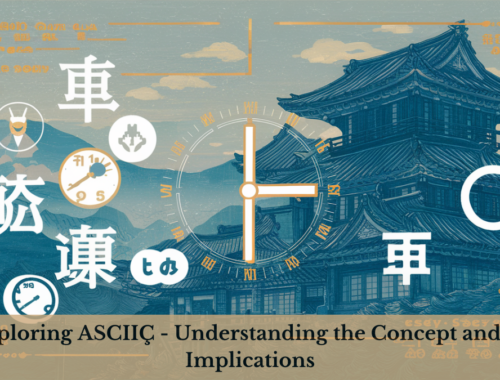
Arturia Pigments 432Hz Precise Temperament – A Deep Dive into Enhanced Musical Creativity
Arturia Pigments is a powerful and versatile software synthesizer that has captured the attention of musicians and producers worldwide. Among its many features, one aspect that stands out for those seeking a deeper, more harmonious sound is the ability to tune to 432Hz. In this comprehensive article, we’ll explore what 432Hz tuning is, why it matters, how it can be implemented in Arturia Pigments, and the impact it can have on your music production.
Arturia Pigments’ 432Hz precise temperament enhances musical creativity by offering a natural, harmonious sound, ideal for ambient, cinematic, and meditative music production.
This guide will provide insights beyond what’s currently available online, offering new perspectives on how to maximize the use of 432Hz tuning in Arturia Pigments.
What is 432Hz Tuning?
Understanding 432Hz: The Basics
432Hz tuning refers to the practice of tuning musical instruments so that the note A4 (which is usually set to 440Hz in standard tuning) is set to 432Hz. This specific frequency is believed by some to be more in tune with the natural vibrations of the universe, offering a more relaxing and harmonious sound.
Historical and Theoretical Background
Historically, various tuning standards have been used, but 440Hz became the global standard in the mid-20th century. However, proponents of 432Hz tuning argue that this frequency is more “natural” and can resonate better with the human body and the environment. Some claim that 432Hz has healing properties and is more aligned with the vibrations of nature.
The Science Behind 432Hz
While the scientific community is divided on the effects of 432Hz tuning, many musicians and listeners report a noticeable difference in the quality of sound. The debate often centers around the psychological and emotional impact of this tuning, with some arguing that it leads to a more calming and meditative experience.
Arturia Pigments and 432Hz: A Perfect Match
Overview of Arturia Pigments
Arturia Pigments is a cutting-edge software synthesizer known for its intuitive interface, vast array of features, and unparalleled sound design capabilities. It combines multiple synthesis engines, including wavetable, virtual analog, granular, and harmonic synthesis, allowing users to create unique and complex sounds.
Why Use 432Hz Tuning in Arturia Pigments?
Tuning to 432Hz in Arturia Pigments can provide a unique sound palette that enhances the emotional and aesthetic qualities of your music. Whether you’re producing ambient, cinematic, or even mainstream music, 432Hz can add a layer of depth and warmth that is difficult to achieve with standard tuning.
How to Set 432Hz Tuning in Arturia Pigments
- Accessing the Tuning Settings: Open Arturia Pigments and navigate to the master tuning settings. This can usually be found in the global settings or the tuning section of the interface.
- Adjusting the Frequency: Set the master tuning to 432Hz. This will ensure that all notes played in the synthesizer are tuned relative to this frequency.
- Fine-Tuning Individual Oscillators: If desired, you can further fine-tune individual oscillators to create a more precise temperament. This allows for greater control over the harmonic content and can lead to more innovative sound design.
- Saving Your Settings: Once you have set the tuning to 432Hz, save your settings as a preset. This allows you to easily return to this tuning in future projects.
Exploring Precise Temperament in Arturia Pigments
Precise temperament refers to the exact tuning of intervals between notes, beyond just the standard equal temperament used in most modern music. In Arturia Pigments, you can experiment with different temperaments to achieve a specific harmonic quality that complements 432Hz tuning.
- Just Intonation: This temperament is based on pure intervals and can be used to create more consonant harmonies in 432Hz tuning.
- Pythagorean Tuning: Based on the ratios of small whole numbers, Pythagorean tuning can add a distinct, ancient quality to your sound.
- Meantone Temperament: This is a compromise between just intonation and equal temperament, often used to create warm, consonant chords.
The Impact of 432Hz Tuning on Music Production
Emotional and Psychological Effects
Many musicians and listeners report that music tuned to 432Hz feels more calming and centered. This tuning is believed to reduce anxiety and promote relaxation, making it ideal for genres like ambient, meditation, and cinematic music.
Enhancing Musical Expression
432Hz tuning allows for a deeper exploration of musical expression. The subtle differences in pitch can lead to new creative possibilities, helping you to craft music that resonates more deeply with listeners.
Case Studies: Artists and Albums Using 432Hz Tuning
Several well-known artists and albums have utilized 432Hz tuning, often with positive feedback from listeners. These case studies demonstrate the potential of this tuning to create music that stands out and connects with audiences on a deeper level.
Practical Applications: Using 432Hz Tuning in Different Genres
Ambient and Meditation Music
432Hz tuning is particularly popular in ambient and meditation music due to its calming effects. When combined with the sound design capabilities of Arturia Pigments, you can create immersive soundscapes that transport listeners to a state of deep relaxation.
Cinematic Soundtracks
For cinematic soundtracks, 432Hz tuning can add a layer of emotional depth. The precise temperament features in Arturia Pigments allow for the creation of lush, evocative soundtracks that enhance the visual experience.
Mainstream and Electronic Music
While less common, 432Hz tuning can also be used in mainstream and electronic music. By subtly integrating this tuning into your tracks, you can differentiate your sound and offer something unique to your audience.
Advanced Techniques: Pushing the Boundaries of 432Hz Tuning in Arturia Pigments
Layering and Modulation
One way to explore 432Hz tuning in Arturia Pigments is by layering different sound sources and applying modulation. This can create complex textures and evolving soundscapes that make full use of the unique qualities of 432Hz tuning.
Combining Synthesis Engines
Arturia Pigments allows you to combine different synthesis engines, such as wavetable and granular synthesis, within a single patch. By applying 432Hz tuning to these engines, you can create rich, evolving sounds that are both harmonically interesting and emotionally resonant.
Experimenting with Microtonal Scales
For those looking to push the boundaries even further, Arturia Pigments supports the use of microtonal scales. By integrating 432Hz tuning with microtonal scales, you can explore entirely new harmonic landscapes and create music that defies conventional tonal structures.
The Future of 432Hz Tuning in Music Production
Growing Interest in Alternative Tunings
As more musicians and producers explore the possibilities of alternative tunings, 432Hz is likely to gain more attention. Arturia Pigments, with its flexible tuning options and powerful synthesis capabilities, is well-positioned to be at the forefront of this movement.
Potential for New Genres
The unique sound characteristics of 432Hz tuning could lead to the development of new genres or sub-genres of music. Producers who experiment with this tuning may discover new ways of combining sound and emotion, leading to fresh musical expressions.
Integration with Other Technologies
As music production technology continues to evolve, the integration of 432Hz tuning with other tools, such as AI-driven composition software or virtual reality soundscapes, could open up even more creative possibilities.
FAQs about Arturia Pigments 432Hz Precise Temperament
Q1: What makes 432Hz tuning different from standard 440Hz tuning?
A1: 432Hz tuning is believed to be more in tune with the natural vibrations of the universe, offering a more harmonious and calming sound compared to the standard 440Hz tuning.
Q2: Can I use 432Hz tuning in all types of music?
A2: Yes, 432Hz tuning can be applied to various genres, though it is particularly effective in ambient, meditation, and cinematic music where a calming and emotionally resonant sound is desired.
Q3: How do I set 432Hz tuning in Arturia Pigments?
A3: You can set 432Hz tuning in Arturia Pigments by adjusting the master tuning in the global settings. You can also fine-tune individual oscillators to create a precise temperament.
Q4: Is there scientific evidence supporting the benefits of 432Hz tuning?
A4: While scientific evidence is mixed, many musicians and listeners report a noticeable difference in the quality of sound with 432Hz tuning, often describing it as more soothing and natural.
Q5: Can 432Hz tuning be combined with other tuning systems?
A5: Yes, 432Hz tuning can be combined with other tuning systems like just intonation or microtonal scales to create unique harmonic landscapes and innovative sounds.
Conclusion: Unleashing the Full Potential of Arturia Pigments with 432Hz Tuning
Arturia Pigments offers a rich platform for exploring the creative possibilities of 432Hz tuning. By understanding the theoretical background, practical applications, and advanced techniques associated with this tuning, you can enhance your music production and create sounds that resonate on a deeper level. Whether you’re producing ambient soundscapes, cinematic scores, or even mainstream tracks, integrating 432Hz tuning into your workflow with Arturia Pigments can open up new dimensions of musical expression.
You May Also Like

Exploring ASCIIÇ – Understanding the Concept and Its Implications
August 19, 2024
Discovering Chxrrigguk – A Hidden Gem for Birdwatchers
August 15, 2024


